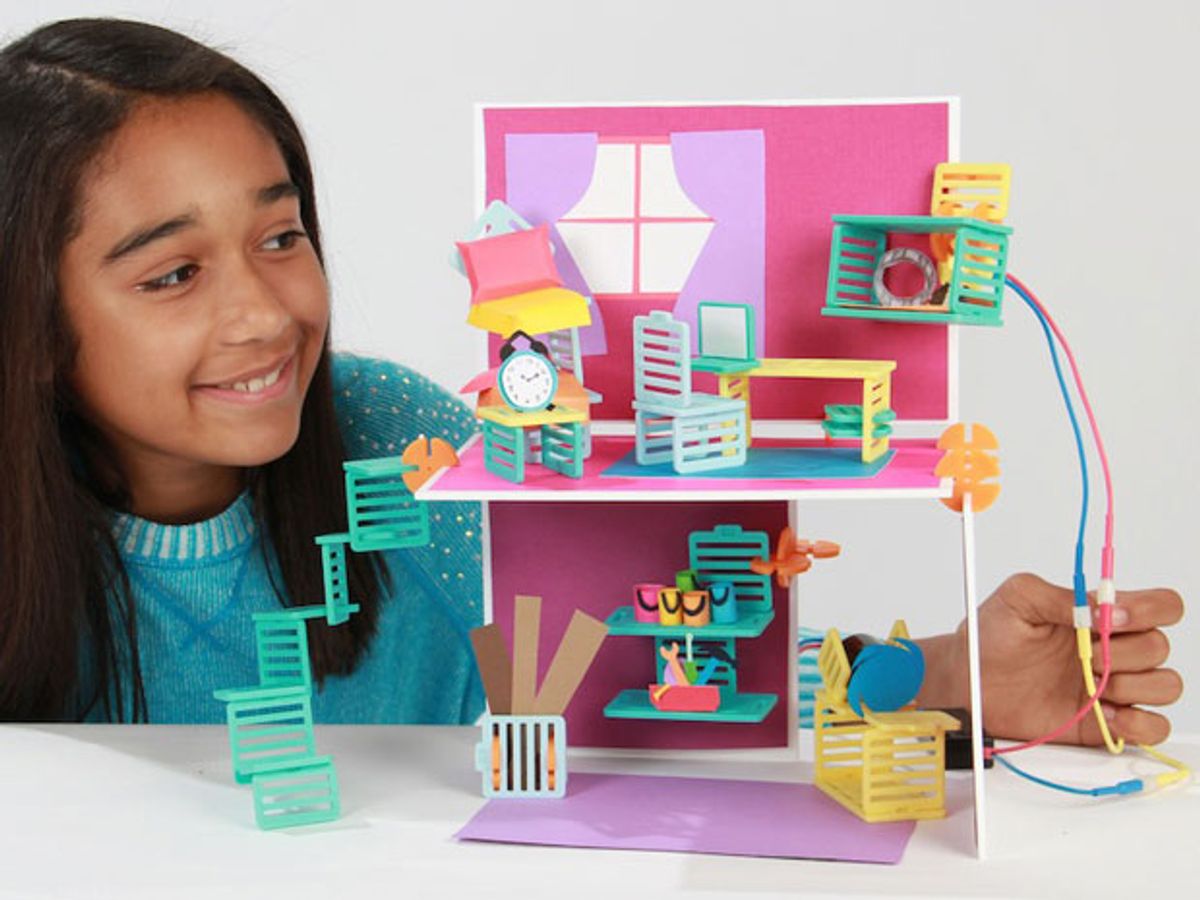One of the cool things about living in Silicon Valley is getting to watch companies grow up. We see the words on temporary tenant boards outside tiny offices in downtown Palo Alto become household names and move into ever more stunning corporate campuses. (We forget the ones that disappear, of course.) And as products evolve from rough prototypes, we see founders grow and change with them. It’s always nice when we see products and founders that captured our imagination go through the process of maturing and getting out into the world.
Two of my favorite new STEM toy companies of the past couple of years have been going through that process: Light Up, which I wrote about last spring, and Roominate, which I wrote about in 2012. I saw them both recently at MakerCon, and Light Up showed up again at a Stanford showcase. (A STEM toy, by my definition, is a toy designed to be an easy entry point to science or engineering for kids who may never have tried either.) Both have changed quite a bit since I first saw them.
I first met Alice Brooks of Roominate at Stanford’s StartX Demo Day. Her dollhouse kit had wooden parts that connected together to form floors, walls, and furniture, and a battery pack and wires for a circuit to control a light, fan, or buzzer. Since then, Roominate has switched to making the pieces out of a durable and slightly flexible plastic that allows them to be pushed together and pulled apart countless times. And Roominate has added more capabilities to its starter sets. It turns out, Brooks says, that every kid wanted to build a couch, and Roominate had left couches out of the first round. Roominate is also including LED lighting in its basic ($30) sets now, and has beefed up its instruction book with more ideas of things to build with the kits' parts and motors.
The latest change: dolls. Because after all, what’s a dollhouse, even one with a working doorbell and turning fans, without dolls to live in it.
Is the company booming? Not yet (and they’re not talking specifically about sales) but their products are in some key catalogs like FatBrain.
I met Josh Chan from Light Up at the Haxlr8r launch event last May. Light Up is a set of circuit board components that snap together magnetically, and an app that uses the camera on a phone or tablet to analyze the configuration you’ve come up with to show current flow or troubleshoot problems with the circuit. Lightup has changed a bit in looks since I saw it last year, with the basic modules going from squares to hexagons (the hexagon shape allows the blocks to connect at right angles), but its functionality has stayed the same. The designers also added transparent covers; users can still see the components that were exposed in the earlier version, but the covers make the parts more durable and better able to past toy industry safety tests. The company, Josh reported, had a little trouble getting its first product out to its Kickstarter backers in time for Christmas, as promised, but did manage to ship minikits (now priced at $75) that arrived on Christmas Eve.
Tekla S. Perry is a senior editor at IEEE Spectrum. Based in Palo Alto, Calif., she's been covering the people, companies, and technology that make Silicon Valley a special place for more than 40 years. An IEEE member, she holds a bachelor's degree in journalism from Michigan State University.




